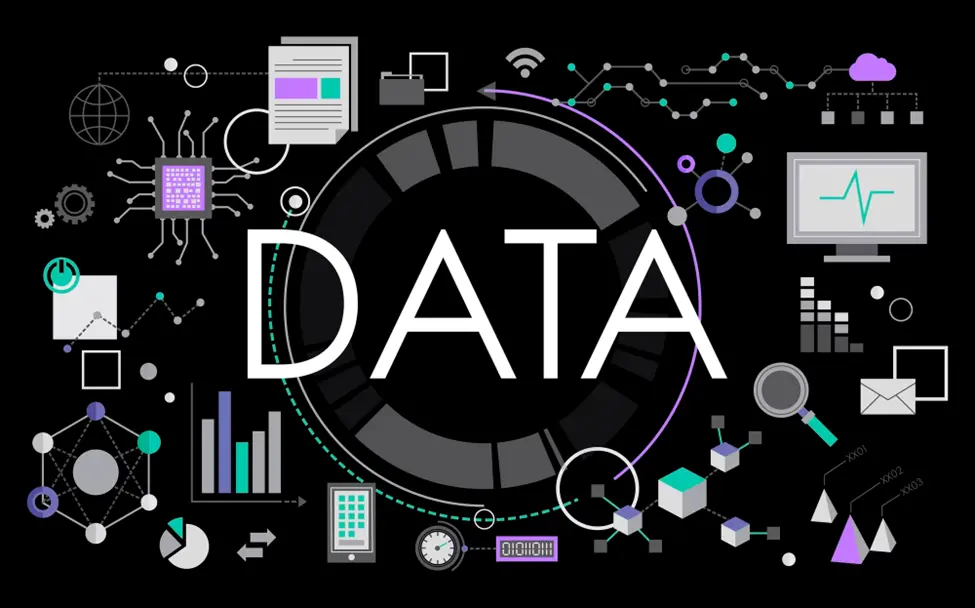Have you ever found yourself in a situation where traditional data sources just aren’t cutting it? For example, you run an e-commerce company and your sales are good. But you have a hunch they could be greater. You’ve analyzed your internal data and even peeked at your competitors’ public metrics. Yet, something feels amiss.
So, when you’re on the hunt for fresh insights, you usually go to search for data in places you’ve never accessed before. That’s how you get alternative data. But what exactly is it? And more importantly, why should you be interested in it? Explore this and more in our article.
Definition of alternative data
As you need data for decision-making, you probably collect it from financial statements, market research, or sales reports. That’s traditional data. But what is alternative data about? It’s the one that originates from non-conventional sources: social media comments, geolocation data, images, and more.
Every tweet, every online review, every “check-in” at your favorite café—all these refer to alternative data. But this term gets its name not only because of where it comes from. It’s alternative because of the fresh perspective it brings to you.
Types of alternative data
Social media & online engagement data
Social media platforms and online forums are where opinions bloom and trends take flight. So, if you’ve ever wondered what’s going on in the market or what the world is saying about your brand, it’s the best place to conduct web scraping.
But social media and the online realm are filled with different types of alt data. Here’s what you can collect there:
- User-generated content (posts, comments, hashtags, reviews, etc.)
- Engagement metrics (likes, shares, reactions, follower count, comments, etc.)
- Influencer data (profiles, demographics, engagement rates, brand collaborations, and more)
What’s in this data for you? Pretty a lot of stuff. Based on the information you collect, you’ll identify trending topics, emerging memes, or viral posts to be on the same page with the virtual society. Also, you may learn how the audience responds to news or particular topics—does it feel joy, anger, surprise, etc.?
Besides, you’ll be able to get insights about your competitors. How many followers do they have? What’s their growth rate? How do they communicate with their subscribers? Who do they collaborate with? You can learn anything you want about the social media activities of your rivals with alternative data.
Geographic location data
Geographic location information unveils a spatial dimension of consumer behaviors and market dynamics. Let’s explore the facets of this data type:
- Geo-coordinates (latitude and longitude)
- Place data (names, types of places, addresses, postal code)
- Movement data (traffic flow and congestion data)
- Check-ins and visits (data from social media check-ins or other platforms where users share their location)
- Area demographics (population density, age distribution, and other demographic data of particular areas)
- Geo-tagged content (images, posts, or videos tagged with geographic locations)
What are alternative data use cases? If you’re engaged in supply chain operations, this alternative data will help identify optimal routes and delivery schedules to reduce costs and improve flow efficiency. Those who are into urban planning and development may want to use alt geographic location information to understand movement patterns to design better infrastructure and public services. Marketers will benefit from spatial data, too. For example, when choosing the locations for new outlets or service areas. Or to optimize targeted advertising. You can create localized promotions and ads based on the geographic location of potential customers.

Transaction & purchase data
This form of alternative data captures the financial footprints of consumers. With transaction and purchase information at hand, you’ll get a glimpse into their spending behaviors, preferences, and economic engagement.
If you run a business in the retail domain, the insights you get from this alternative data will let you align stock levels with consumer demand. Or you may want to use it to streamline your pricing strategies. Marketing teams will make great use of transactional and purchase information, too. As marketers understand spending patterns, they will be able to create personalized marketing campaigns to boost customer engagement. Or one can analyze return information to improve product or service quality.
So, what sorts of data you can fetch from transactions?
- Sales receipts (items purchased, amounts spent, and time of purchase)
- Transaction information (data regarding the frequency, amount, and nature of purchases with a specific payment method)
- Loyalty program data (purchasing history, frequency of purchases, and preferences)
- Promotion offers use data (info connected with the utilization of discounts, coupons, and other offers)
- Refund and return information (reasons for returns and associated costs)
Sensor and IoT data
With an array of sensors and smart devices out there, why not leverage data from them to grow your business? But what exactly can you capture there?
- Environmental data (temperature, humidity, air quality, light, and other environmental conditions)
- Energy consumption (energy usage patterns across different devices and systems)
- User interactions (how individuals interact with devices, systems, or smart environments)
- Health and fitness data (physical activity, heart rate, sleep patterns, and other health-related metrics)
- Location and movement (location, movement, and activities of individuals and assets)
You can harness these data points for various purposes. For instance, in industrial settings, you may want to leverage these insights for predictive maintenance. Once you take a proactive approach toward machinery or other assets, you’ll be able to reduce downtime. On the domestic front, information about energy usage will enable you to lower bills and reduce your carbon footprint.
Sources of alternative data
So, where does all that data come from? In fact, it has a few origins. So, let’s break down core alternative data sources.
First, it’s generated by individuals. This sort of alt data comes with a level of authenticity that can be hard to find elsewhere. It’s a direct reflection of what people are thinking, feeling, and experiencing in the market. Also, this data is usually unstructured as it’s presented in different formats—text, images, videos, and whatnot. What else sets data produced by individuals apart is an emotional appeal as people usually share how they feel about particular topics, products, or brands. So, it’s the best source to learn about personal experiences, behaviors, and opinions.
Alternative data that comes from businesses usually underpins the market landscape and the operational foundations of the business world. Business-generated data usually comes in an organized format. This could range from sales reports to financial statements. So, it’s easier to analyze and draw insights from it.
Also, sensors produce alternative data, usually for real-time insights or when you deal with objective, quantitative measurements. So, this source is a great choice for situations when you need to make a rapid response to evolving situations. Sensor data always has a high degree of precision, so it requires fewer data validation steps. Moreover, sensors monitor conditions continuously, so you can count on an uninterrupted data stream.

How to get alt data?
There are many ways to access alternative data. The one you select for your project mainly depends on your objectives, data quality and volume, and financial resources at hand.
- If you’re on a budget and will be satisfied with a glimpse of alternative data, you may consider manual data collection from publicly available sources (government databases, open data portals, and publicly disclosed corporate reports).
- To collect alt data at scale (for example, if you plan to use alternative data for market research), consider web scraping. Scraping tools will access any type of information, structured and unstructured. Then, vendors will deliver it in a format that’s convenient for you to process.
- You may buy data from data vendors, brokers, or marketplaces that specialize in selling alternative data. That’s a risky step, so verify the quality, accuracy, and legality of the data before making a purchase.
- Alternatively, consider using an API provided by platforms, services, or data vendors. The good side of this is that you access data in a structured and consistent manner. But there may be restrictions on what type of information you can fetch.
- Utilize crowdsourcing platforms to collect data from numerous individuals. For example, there is Amazon Mechanical Turk that will let you gather various types of information.
- To find alternative data for finance, visit financial exchanges or market data platforms. They’ll provide you with the most up-to-date financial, trading, and market-related data.
Advantages of alternative data
Enhanced decision-making
Without any doubt, alternative data enriches the perspective from which you may be making decisions. It unveils insights that are often left untouched by traditional data sources. So, you can tap into a more nuanced understanding of market dynamics, consumer behavior, or competitive landscape.
As experts at Deloitte suggest, alternative data for investment decisions is more important than ever, since access to the fastest and most reliable has been important to generating alpha. Those companies that are unable to use this sort of data may operate at an informational disadvantage and will fall behind their peers. A recent survey shows that 98% of investment professionals agree that alternative data is important for decision-making. About half of these respondents plan to increase their budget on alternative data from 26% to 50%.
Predictive analytics & forecasting
The alternative data research introduces the idea that with alt information, you may get a granular view of market dynamics and see the bigger picture with the finest details. For example, you may look at fine-grained company financials (like daily revenue) to forecast financial trends with a higher level of precision.
Moreover, the infusion of alternative data into predictive models can significantly increase their accuracy. As you incorporate information on credit card transactions, you’ll get a more accurate forecast of the company’s daily revenue. You can increase the forecasting frequency, too. The thing is that traditional sources (quarterly reports) give you a low-frequency view. Likewise, you can use alternative information at any time for forecasting purposes.
Consumer insights
Would like to discover what resonates with your customers and what doesn’t? Study consumer reviews and feedback on social media, forums, and other online platforms. This alternative data will let you understand consumers’ behavior. Equipped with these insights, you’ll be able to create personalized customer experiences, improve your service or product, or foster stronger customer-brand relationships.
Conclusion
It’s absolutely clear that alternative data is going to bring massive profits to those businesses that consider using it in the coming years. While collecting this type of information may be laborious, there is a shortcut — data harvesting. As a web scraping company with years of experience, Nannostomus is eager to equip you with alternative data at the level your company requires.




